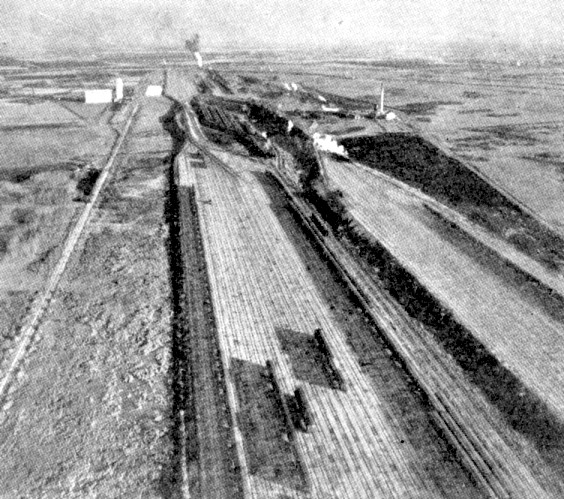
The Canadian Parliamentary Press Gallery, located in the House of Commons, covers parliamentary and other government news.
Seventy full-time correspondents represent Canadian, British and
foreign daily newspapers
and ten associates represent specialized
papers and periodicals.
The Press Gallery, though subject to the Speaker's jurisdiction, is responsible for its own internal organization. (1955)
Back in 1955, the newspaper was
still the most reliable source of news,
with 'hard copies' being preserved, clipped, and archived to serve as
an account of the day's events for future reference - 'the first draft
of history'. With busy urban evenings jam-packed
with activities like ... like ... eating dinner ... and washing the
dishes by hand ...
adults would often spend
the remainder of the evening smoking as they read through a newspaper
or a book.
Anything more urgent - like an sneak atomic bombing attack by the
'Reds' -
could wait until the morning edition of the newspaper ... or would
come from a short news broadcast on the radio.
Newspaper news stories were often 'long and bo-ring' by
today's standards, and had lots of verified details written in concise,
well-crafted English. The editors were often people with long careers
in the business who vigorously enforced writing 'style'. The editors often
retained vast databases of facts, biographies, government processes, general history, and knowledge of previous
news stories ... in their heads.
There was no spell checker - editors had to know how to spell ... the difference between Colombia and Columbia, for example.
In 1955, counting morning and
evening editions separately,
there were 95 daily newspapers in Canada, with a total circulation of
more than 3.5 million copies per day. Let's hear it for Canadian
newsprint ! ... used everywhere from the US, to Britain, to Germany.
Languages used: Considering all the dailies ... 82% were English, with the
remainder French and a small proportion of dailies in Yiddish or
Chinese. The revenue of the papers was 71% from advertising and 29%
from sales.
In the mid-1950s there was black and white television ...
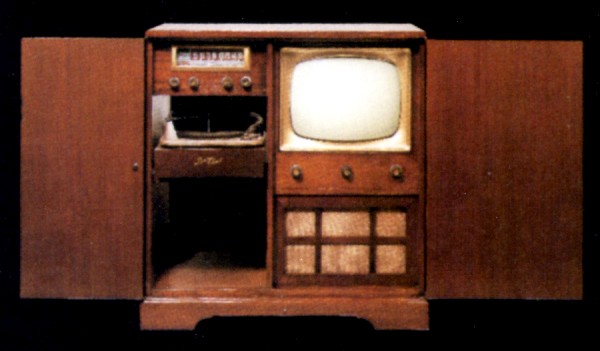
Here is a fabulous entertainment centre of the period.
It has AM, FM and probably
short-wave and police band radio, a television, a multi-disc changer
and a place to store your LPs or 78s.
Have it installed and optimized in your home theatre by the NerdBrigade* (*registered service mark) for just $99 ... not.
In 1955, the CBC had 80 radio transmitters, with eight of 50,000 watts
to serve rural areas. Most of these transmitted AM signals which travel
long distances much better than FM radio and TV signals.
In 1954, CBC operated TV stations in Vancouver, Winnipeg, Toronto,
Ottawa, Montreal (English and French) and Halifax. About 20 private TV
stations operated locally across Canada in major cities.
Hey kids, why not interpret all this for a science fair? ...
Black and white television:
A monochrome CRT and a monaural speaker housed in a cabinet of finished
and polished solid wood. The 'television set' often used a two-element VHF band antenna placed on
top of the set to pick up the wireless broadcast signals. Good reception
was limited to 'range of vision' from nearby VHF broadcast tower(s). Licensed
broadcast frequencies were assigned channel numbers 2 up to 13. Once the set
was purchased, television viewing was free until repairs were required after 10-20 years
... usually accomplished by unplugging and replacing a vacuum tube or two.
Other olden TV watching vocabulary words/expressions/technologies for you to look up and learn on your own ...
- Rabbit ears.
- Steel wool.
- Snow.
- Ghosting.
- 'Warming up' the TV.
- Vertical hold.
- 'Do not adjust your set'.
- Test pattern.
- The late movie.
- National anthem.
- Popatubeaphobia (see: social history of colour television in the 1970s)
 Pupils in an Ontario Secondary School taking training in aerial navigation. (1944)
Pupils in an Ontario Secondary School taking training in aerial navigation. (1944)
"What did you learn today at school Sally ?"
"Dead reckoning."
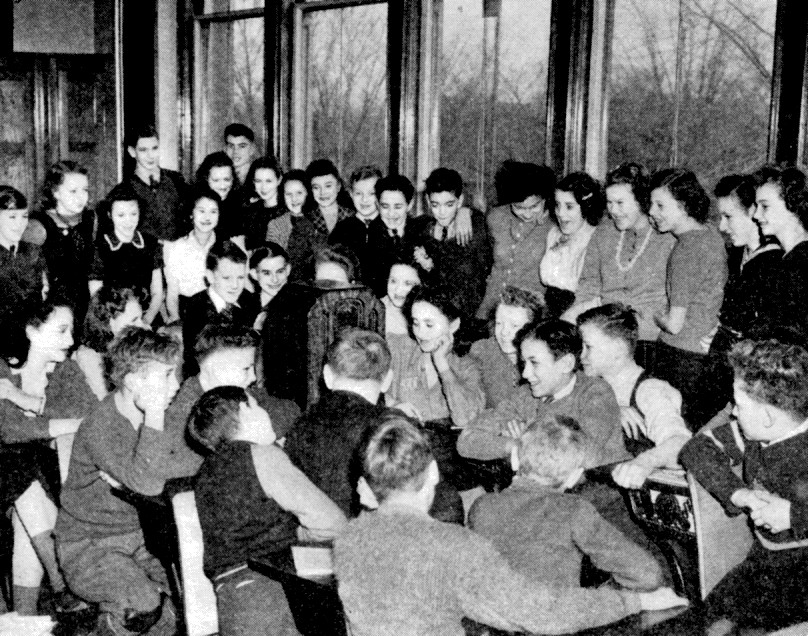
Listening to the CBC School Broadcasts in the Class Room. (1944)
Probably something like
'Asbestos, the Wonder Mineral'
or
'Let's All Smash the Axis'
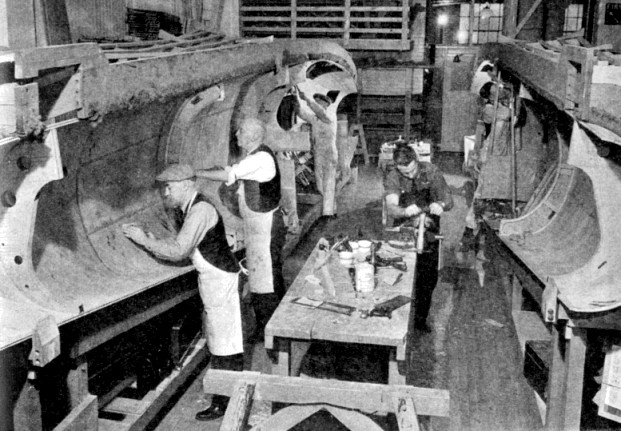
Wooden fuselage pieces for a Mosquito Aeroplane
A lath strip, tongue and groove fitting, and special adhesives bind the parts together so neatly and firmly
that the joint is not only invisible but as strong as any part of the fuselage. (1944)
Below ... after all the airplane glue is applied ...
This two-seater weighed about 7 tons and later versions could reach speeds up to 400mph with a ceiling of up to 30,000 feet.
They were relatively fast and powerful using two Rolls-Royce engines similar to those used in Spitfire fighters.
Some 'Mossies' were used for very low-level precision bombing.
Others were used for photo-reconnaissance, or as night fighters against enemy bombers or night fighters.
Notably, they were often equipped with the latest electronic inventions and used during the night bombing of Germany.
In this role, they might be used as 'pathfinders' - dropping flares to mark the urban targets for heavy bombers.
Or, they might drop strips of foil or use their electronics to 'spoof' German radar ...
so German night fighters were misdirected, away from the main heavy bomber stream.
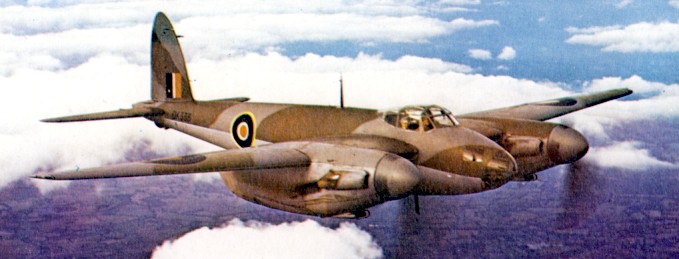
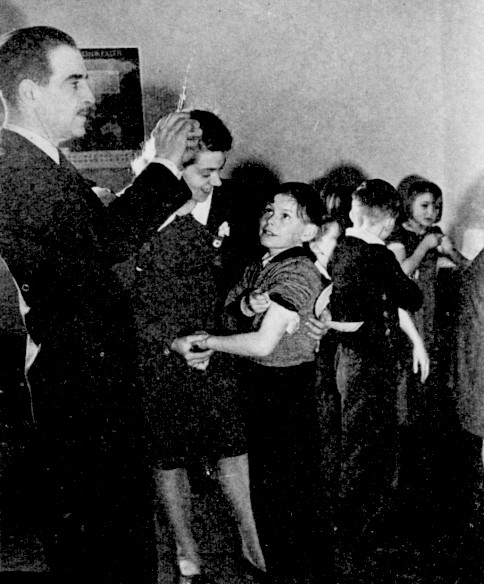
Inoculation of children against infectious diseases has become part of the regular school routine.
These children are being inoculated against typhoid fever.
(1946)
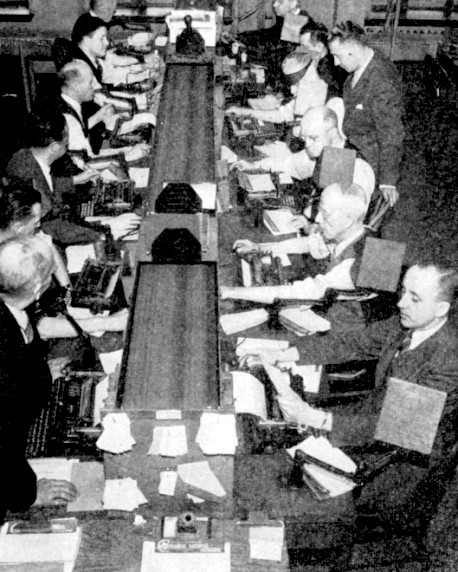
Toronto Morse Room on Election Day, showing operators sitting on each side of the movable belt
which
conveys messages as soon as they are received to the distribution
centre.
Such peak rush period require a cooperative effort in the common cause of speed and accuracy of handling. (1946)
There was no 'Decision Desk' calling the outcome of the election 30 minutes after the polls closed back then.
With morning newspapers going to print with perhaps a midnight deadline ...
1. There was no rush to provide instant results before people went to bed.
2. With federal elections, the slower poll return reporting did not fuel the divisive feeling that the outcome had already been
'decided' in the east
... before the western Canada votes were counted and reported.
The main goal here was clerical accuracy in transmitting, receiving and typing the messages.
The television networks (and the internet) didn't rush the pace of results reporting as they do today.
* * *
Notice the little boxes on arms near the left ears of the telegraphers above.
They contained the 'sounders' which made the long and short clicks of the 'binary language' of Morse Code.
Common letters used fewer sounds to reduce the 'bandwidth' required for a message ... for example, an 'E' was a single 'dot'.
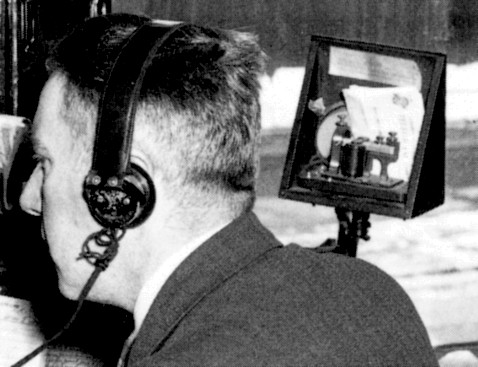 This railway operator is on his 'hands free telephone' to the dispatcher at the moment ...
This railway operator is on his 'hands free telephone' to the dispatcher at the moment ...
You can see the telegraph sounder in the box.
Using either of the two systems, he can write while receiving messages and orders.
Looking at the sounder, the vertical black cylinders (2 of them) are electro-magnets which move the horizontal bar ...
which clicks and clacks as the magnets energize and de-energize.
An effective resonant amplifier was sometimes used in noisy station environments ...
an empty coffee can was placed over the assembly.
* * *
Commercial code books were sold,
or published internally to meet the needs of a single company ...
to reduce the bandwidth required ...
to avoid misunderstanding ...
and to discourage 'hackers' who might ...
1. listen in on the telegraph 'party line' at another station,
2. hear the signals as they were sent or received,
3. see the written messages or carbons,
These code books used words, nonsense words, or groups of letters
to encrypt the message before it was sent.
Like this example of various codes to describe train wrecks ...
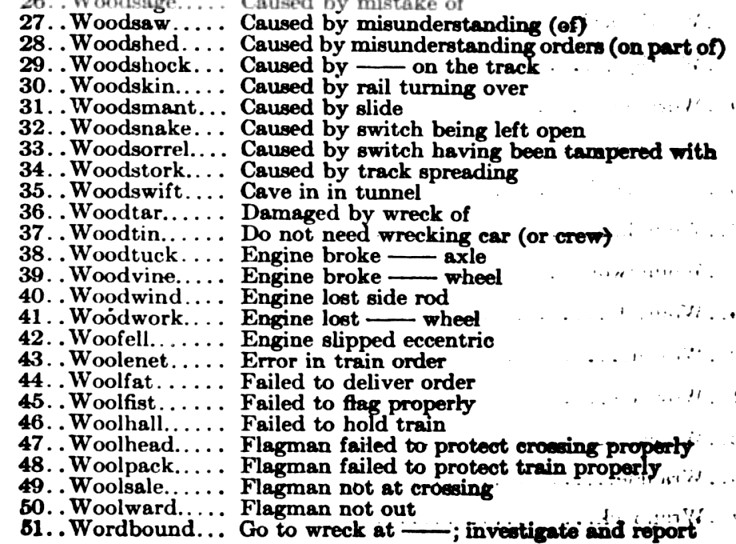
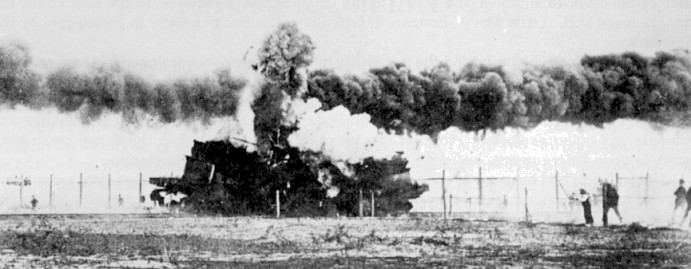 Message: "Woo ... "
Message: "Woo ... "
No trainmen were harmed during the making of this trainwreck.
It was an 1896 crowd entertainment stunt in the US using retired locomotives.
Back to sitemap
